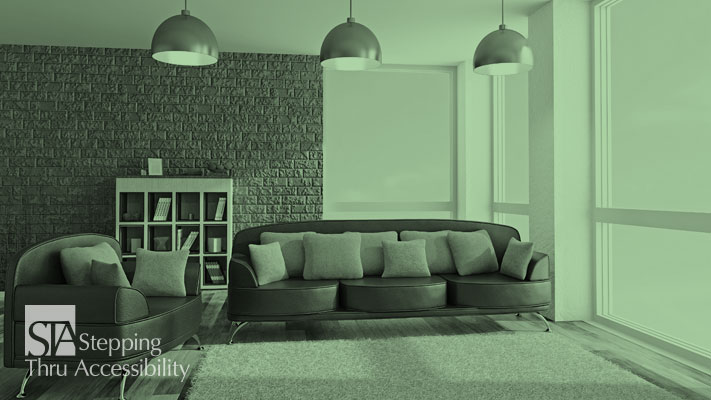Blog
Return to Blog »
Janis Kent, Architect, FAIA, CASp © February, 2016 Aside from all of the scoping and technical information one is required to implement into transient lodging guest rooms, there are a number of other items to be aware of that may not be as clearly defined. One of the questions that comes up – how high do the beds need to be? Currently this is not regulated. With that being said, it is suggested to track which guest rooms have beds that are low and which ones that have beds that are high. If this can be given as a choice when someone books a room, it would be a good idea. Taller beds work better for some, whereas lower beds work better for others. If possible, it is about choice and communication. Another issue that comes up many times is loose rugs that are placed in the guest rooms, and other places, to provide a more residential feel. Unfortunately, although these may not be directly regulated, they can become a tripping hazard since they are not firm and stable. In order to avoid this, place special double -sided tape along the edges so the rug is affixed to the floor. This will need to be ‘re-taped’ depending on how often it is lifted and the floor is cleaned, in order to keep it securely fastened to the floor. Another item is closet space – one of each type of storage is required to be within reach range for mobility guest rooms. So this could be hangrods or shelves or drawers. Be aware of placing a safe or a small refrigerator under a lower hangrod since this many times blocks the ability to hang pants, dresses, or other longer garments. Also, consideration should be given on only placing a partial amount of storage at a lower reach range, since a companion using the closet may be able-bodied and a higher hang rod might be desirable. Aside from clothes, many times loose irons are placed on shelves that are not within reach range or extra blankets and pillows, so another option should be implemented. Also consider how and where hair dryers are stored. I have seen these placed in a bag hanging from a coat hook in the bathroom which is not within reach range making it quite difficult to access for some people since two hands may be needed to get the dryer out of the bag. If the guest room has a tub with a separate seat, thought should be given on where to store the seat when not in use. This should not be a ‘seat-on-call’ but is better if actually stored in the room itself. Although many hotels say it only takes 5 minutes to bring a seat, many times it could take longer. Another thought, if storing the seat in the room is not desirable, is to ask at check-in or when reserving the room if a tub seat is required and have it placed in the room ahead of time. If there is only one phone located within the room, be aware of not placing it on the nightstand between two beds. Unless that night stand has knee/toe clearance below more than likely that phone will not be within reach range. For communication feature rooms that have door bells, the ring might be better to sound like a door bell and could be an adjustable volume. I have seen these connected to strobes and loud alarms which is confusing – if someone can not see, how do they differentiate between the sound of an alarm vs someone at the door. And if a person is deaf, how do they differentiate between a flashing strobe which signifies fire vs someone at the door. So even though these elements may not be tied into the alarm system itself, if it sounds/looks like an alarm, there could be a problem and a source of confusion. So while many of the above items are not explicitly stipulated, a certain amount of thought should be given on how to provide for better access. And remember, dormitories are now considered transient lodging, so some of the above items might also apply. Be aware that your local City or County may have additional requirements that are more restrictive and providing greater access than the State or Federal requirements. Also, this article is an interpretation and opinion of the writer. It is meant as a summary – current original regulations should always be reviewed when making any decisions. © Janis Kent, Architect, FAIA, CASp 2016 Transient Lodging – Things to look out for
